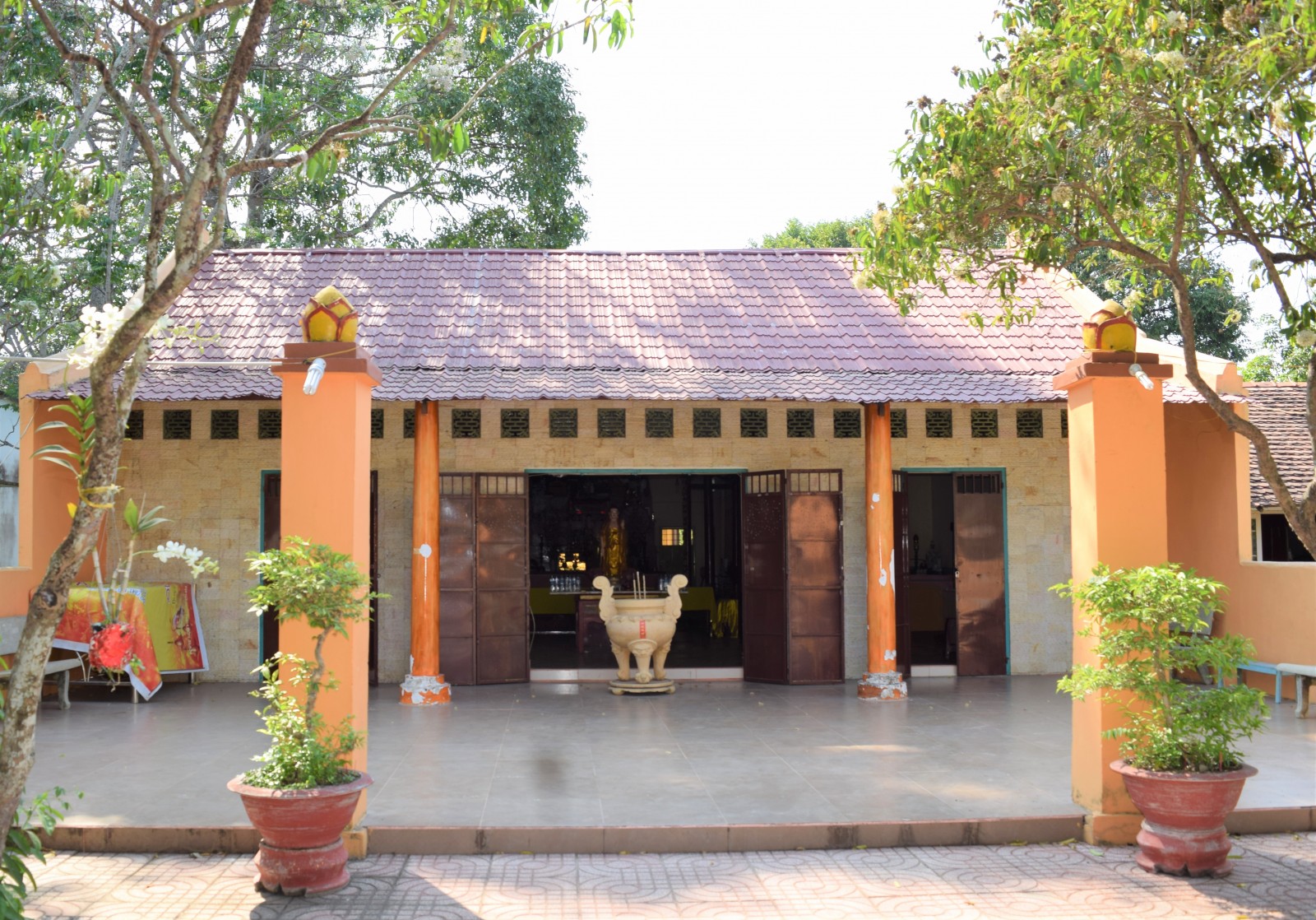Visiting Hoa Nghiem Pagoda for old-time stories
Getting to Dau Tieng, after the expenditure to enjoy natural beauty of local landmarks of Dau Tieng Lake, Cau Mountain, old-time rubber plantations, many usually visit Hoa Nghiem Pagoda in a seek for peace and calm space. Hoa Nghiem Pagoda is a historical-cultural landmark of the district. It is located on a high ground of Tran Van Tra Road at Quarter 4A, Dau Tieng township.

Hoa Nghiem Pagoda holds within it many cultural-historical values
Spiritual support
Hoa Nghiem Pagoda is one of the early established pagodas in Dinh Thanh of the old-time Dau Tieng. Those people exploring the land have sought for hideout at the pagoda in daily life and spiritual activities. Hoa Nghiem Pagoda has another name of Dai Phuong Quang Phat Hoa Nghiem Kinh (the name for humanity, knowledge, consequences and ethics of Buddha) - the only local pagoda of Dinh Thanh, Dau Tieng at the time.
By introduction of cultural officers of Dau Tieng district, Hoa Nghiem Pagoda is the construction depicting the wishes of Ba Lung monk (named Pham Kim Dung) as a place for spiritual support under Buddhism. Ever since 1927, the French colonists bid for contracts with people from the middle and North land of Vietnam in cover over the plot of exploitation labor forces for their rubber plantations in the South including Dau Tieng district. Those immigrants from the middle land and North land were Buddhists. Ba Lung was among them in seeking for ends meet. To fulfill his wish, Ba Lung made use of his free time and days of to construct the pagoda.
After years of chopping trees, by the middle lunar January 1940, Hoa Nghiem Pagoda eyed its ground breaking. The construction was supported by majority of buddhists and locals. After construction, buddhists and locals from Dau Tieng rubber plantations and the neighborhood got the the pagoda seeking for peace in life. As the abuse was too harsh, they often found sanctuary at the pagoda. On the 1st, 14th, 15th and 30th of each lunar month, many come and stay at the pagoda for spiritual activities. In 1950-1960, at the middle of lunar July, thousands of buddhists came to Hoa Nghiem Pagoda where even the colonist authority respected.
Contributions to revolutionary cause
As a sacred place for Buddha worshiping and considered as detached, Hoa Nghiem Pagoda was at the soonest the place for revolutionary cause. They became workers and resistance force against the French bosses by asking for humanity and democracy at the rubber villages. They also attend the resistance war as the supporters and contributors of covering revolutionists.
Ever since, Hoa Nghiem Pagoda became a place of secret hideout for Party organization at Dau Tieng district during the resistance war against the French colony. Ba Lung monk covered up many buddhist families living around the pagoda taking direct participation into the resistance war. Hoa Nghiem Pagoda was also a meeting ground for activities of Youth’s Pioneers fighting against the French colony at Hamlet 4 and the place of hiding propaganda leaflets against the French colony.
To the resistance war against the US Army, many buddhists continued with revolutionary activities. Ut Oanh (Huynh Kim Oanh) was designated to direct the revolutionary actions against the US Army through Hoa Nghiem Pagoda where was also the hideout for many key revolutionists namely Tam Nui, Hai Luong, Ut Lung, Tu Trung, Ba Thuong, Ba Xe, and Nam Khoa. Under command of secret officers, Ba Lung and buddhists organized many Buddha worshiping activities as coverage for constructing tunnels and delivering information for revolutionary cause.
In peacetime, Hoa Nghiem Pagoda was repaired and reconstructed by Ba Lung family and buddhists. The pagoda is also a place for spiritual activities. Ba Lung family was awarded by the State as revolutionary contributors. To protect, renovate and promote historical value of the pagoda, on November 25, 2012, Binh Duong provincial People’s Committee ranked Hoa Nghiem Pagoda as aa provincial historical-cultural landmark.
Reported by Cam Ly - Thanh Dan - Translated by Vi Bao

